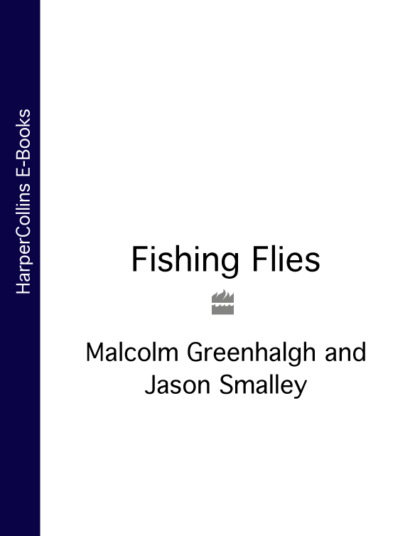По всем вопросам обращайтесь на: info@litportal.ru
(©) 2003-2024.
✖
Fishing Flies
Настройки чтения
Размер шрифта
Высота строк
Поля
Wings: Varied (i.e. hooded) crow back feather.
Head: Blue.
Body: Red silk and gold [tinsel?].
Wings: Red cock hackles.
Head: Black.
JUNE
Body: Green ‘from the feathers of the breast of the wild duck’ [which are brown – were these wound round the hook shank?].
Wings: Dark heron tail.
Body: Blue silk and gold [tinsel?].
Wings: Partridge underwing coverts.
Head: Yellow.
JULY
Body: Blue silk.
Wings: Hooded crow belly feathers.
Head: Black silk.
Body: Green silk and gold [tinsel?].
Wings: Yellow feathers.
Head: Blue silk.
AUGUST
Body: ‘Feathers of a crane’s wing’ [herl?].
Wings: Partridge.
Head: Green silk.
Body: Peacock herl, ‘bound with a golden feather’ [was the golden feather palmered as a body hackle?].
Wings: Back feathers of hazel hen.
Head: Yellow silk.
SEPTEMBER
Body: Blue silk.
Wings: Feathers from back of hooded crow.
Head: Red silk.
Body: Yellow and red silk [twisted, as for the first fly for May?].
Wings: Ptarmigan.
Head: ‘Dark’.
When Gesner wrote his fly patterns, the Treatyse flies were in their pomp in England. It is clear that Gesner was unaware of the Treatyse flies, and that authors in England, up to and beyond Izaak Walton, were oblivious of Gesner’s work.
ITALY’S VALSESIAN FLIES
The Sesia River flows from the Piedmont Alps of Italy. It has long been a great trout and grayling stream. So it is not surprising that it is one of the earliest centres of world fly-fishing and fly-tying, with its own special style of fly named after the valley, Valsesia, also published as Valasesiana. These flies have been traced back to 1570, 74 years after the Treatyse was published and only twelve years after Gesner’s great book. Dr Nicola di Biase considered that they were fished much earlier (Grayling Journal, Summer 2007). The flies provided by Dr di Biase to illustrate her article show the flies to have a wound hackle, making them similar to the softhackles North Country style (see here (#uccb3a118-d079-46d5-a3a0-cbd24940729b)), but (assuming that they were really tied that way in the sixteenth century) predating them by over a century. The hackling is, however, much heavier, and the hackle is forced forwards by several turns of thread immediately behind it. This method of hackling gives the fly more ‘kick’ than the conventional spider as the fly passes through turbulent mountain streams.
Different tyings of Valsesian flies were not, it seems, given different names. This was probably because tyers used what feathers were ready to hand, and what matched the real flies that the trout and grayling were taking. The following are three examples.
Body: Purple thread.
Hackle: Snipe upper wing covert.
Body: Orange thread.
Hackle: Brown speckled partridge.
Body: Olive thread.
Hackle: Starling neck.
SOME EARLY FLIES FROM NORTHERN SPAIN
The Danish fly-dresser Preben Torp Jacobsen was invited by Spain’s president General Franco to dinner. After dinner Franco, who was a great fly-fisher and angling bibliophile, showed Preben his vast library. Among the collection was a hand-written manuscript, dated 1624, by Juan de Bergera, and called El Manuscrito de Astorga. Preben had photographs of the manuscript made and then, with a team from the Spanish Association for the Fly and Salmonids, produced a limited edition consisting of a facsimile of the original and translations into modern Spanish, French and English. Unfortunately a fire subsequently destroyed part of Franco’s library, including the original manuscript.
Astorga is a small town not far from Leon in the Cantabrian Mountains. The rivers there have some very good fishing for brown trout, and it was to catch them that the flies in El Manuscrito were designed. The flies include in their dressings some of the most interesting wild birds to be found in Spain (such as pin-tailed sandgrouse and little bustard) and some very special hackles from cocks bred only in this region. These ‘Coqs de Leon’ are still available and, though expensive, are amongst the best material to use for tying upwinged fly (ephemerid) dun and spinner tails. There are two main types of Coq de Leon. ‘Indios’ are plain hackles, varying from the near white palometa to the blackish negrisco. ‘Pardos’ have a blackish centre (list) and coloured edges which vary from the creamy transparent crudo to a very dark grey corzuno, sometimes with black speckles.
El Manuscrito contains 49 different dressings, four of which are given here. Three are confusingly called Negriscos (they imitate a dark midge called enaguados), the fourth is one called Bermejo Crudo. Note that we do not know how these flies were tied. Hackles were then solely feathers and may not have been wound round the hook as we today wind hackles. However the last fly has one feather used as ‘a wrapping’, which presumably means that it was wrapped (i.e. wound) as we would wind a hackle, in which case, it seems likely that the others were not wound, but simply tied in. This is also suggested by the last of the four flies, where one feather was tied ‘on top’ of another. Whatever. The following tyings are one person’s interpretation.
NEGRISCOS (FOR JANUARY AND FEBRUARY)
Thread: Grey.
Body: Dark silvery grey silk.
Rib: White silk.





